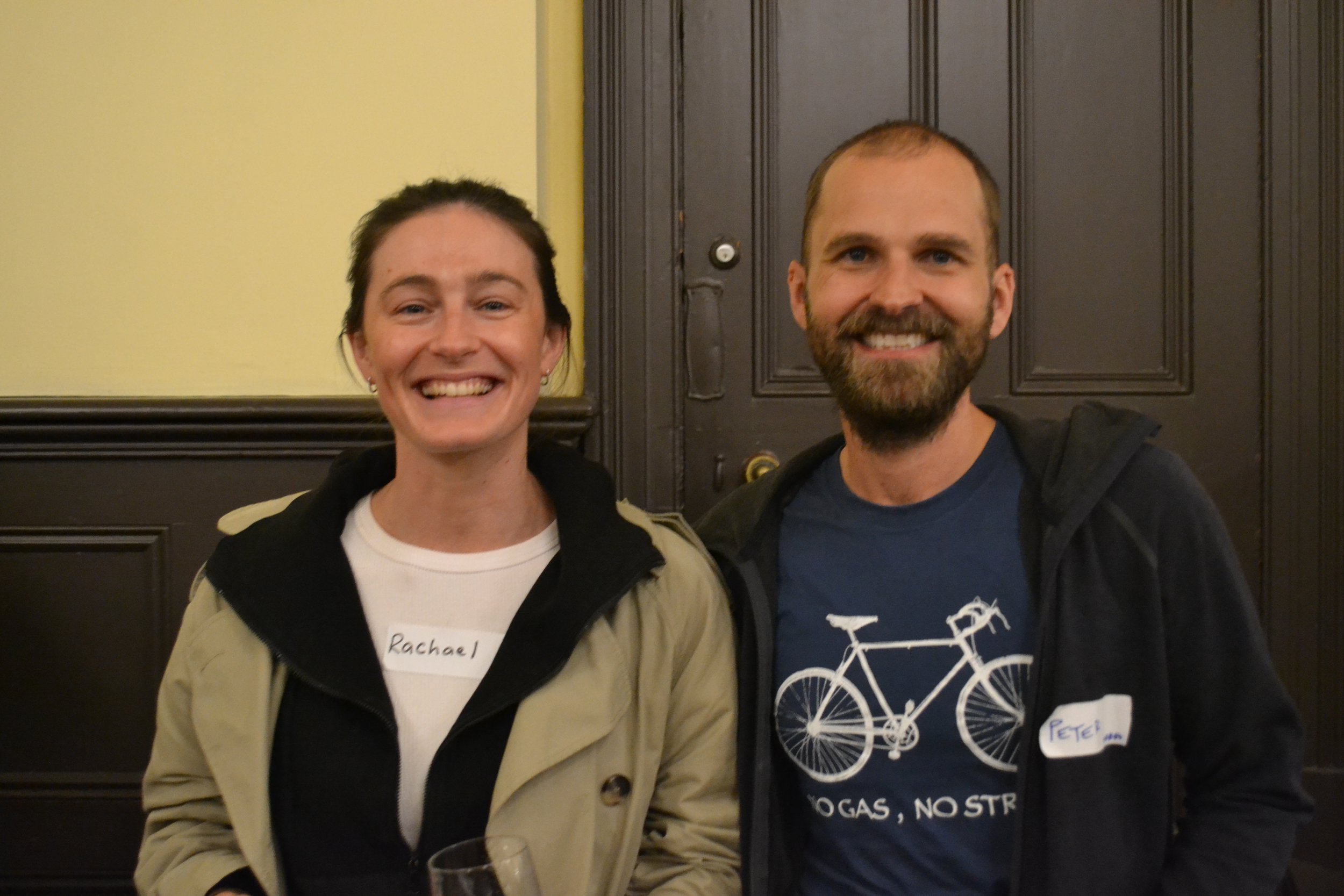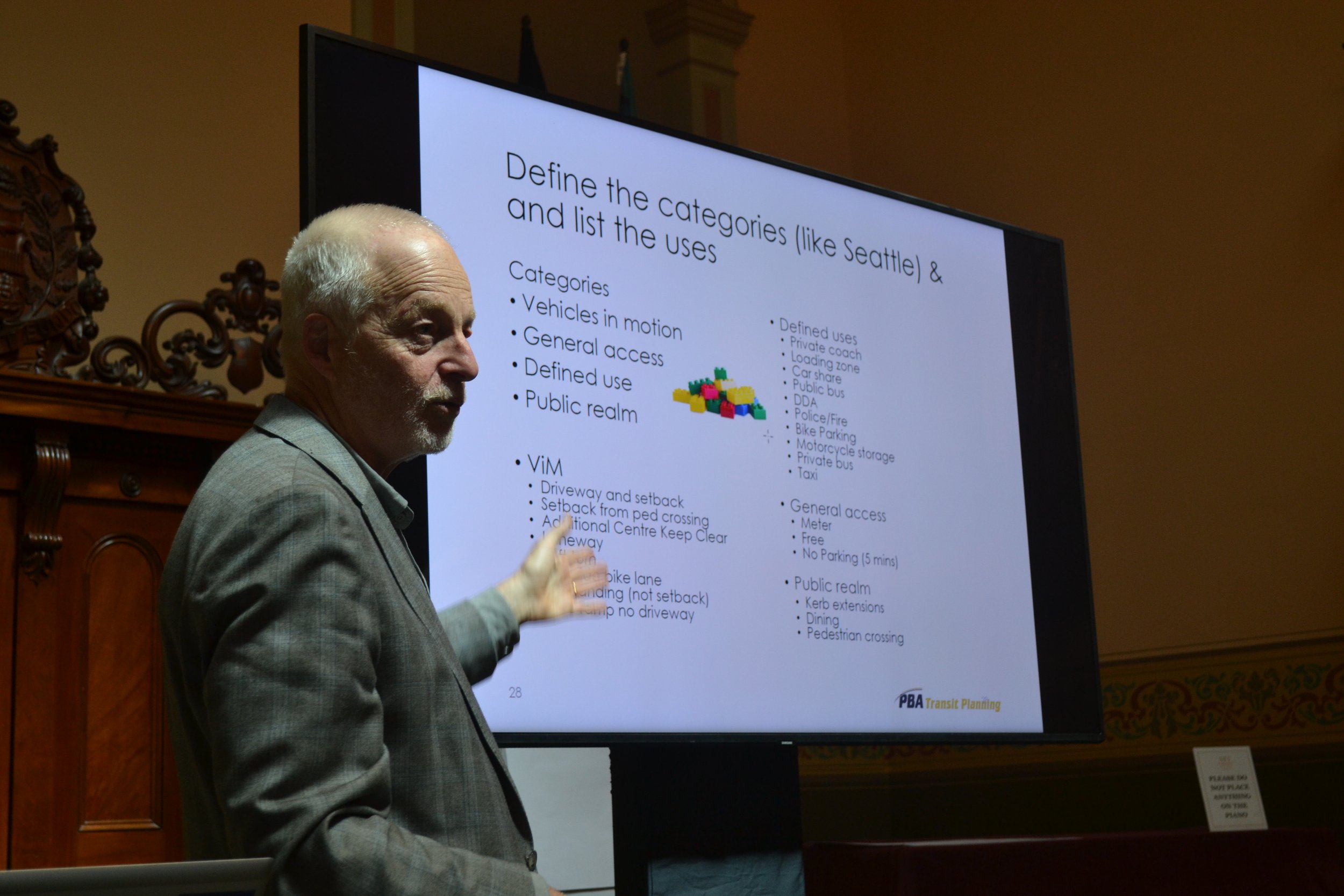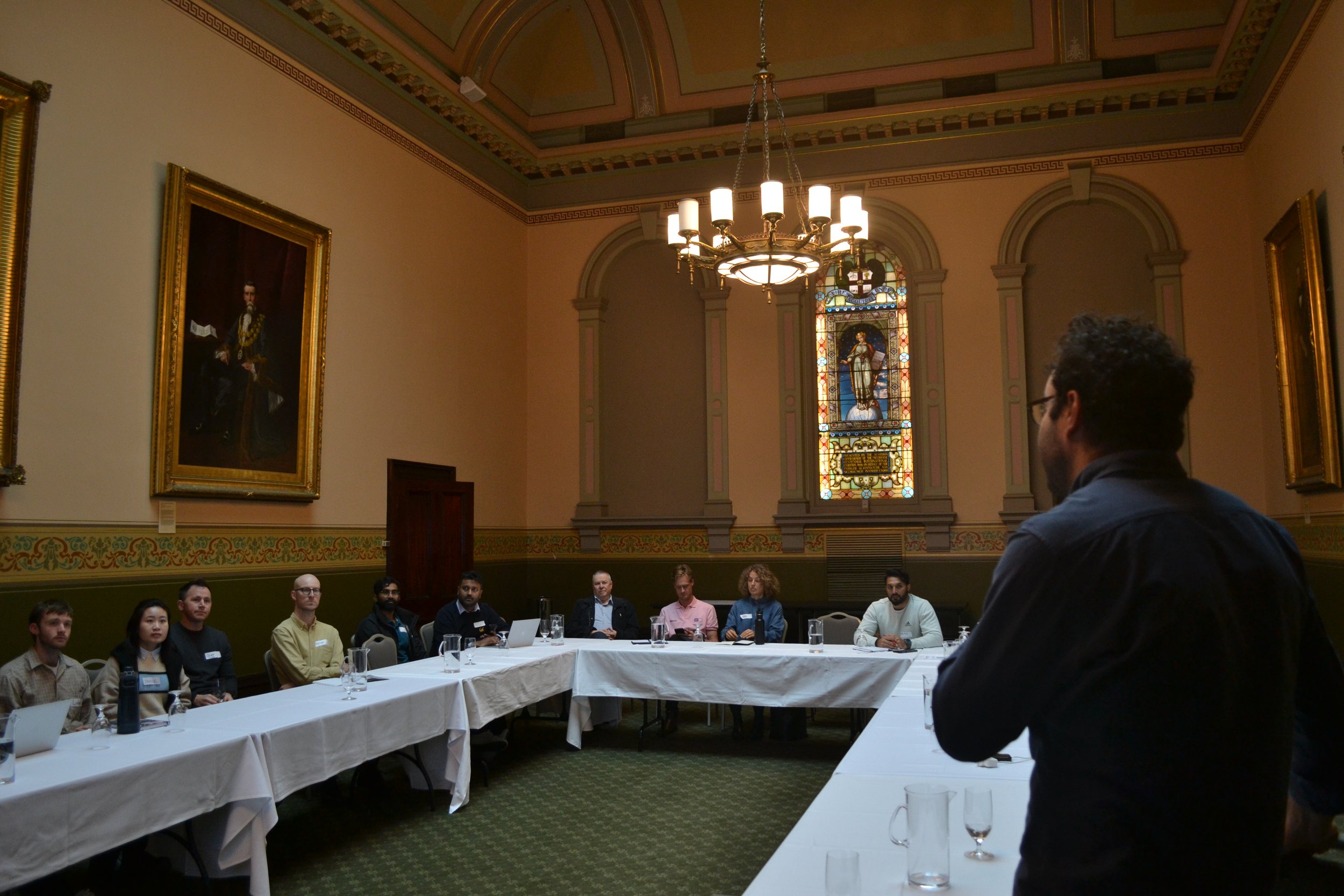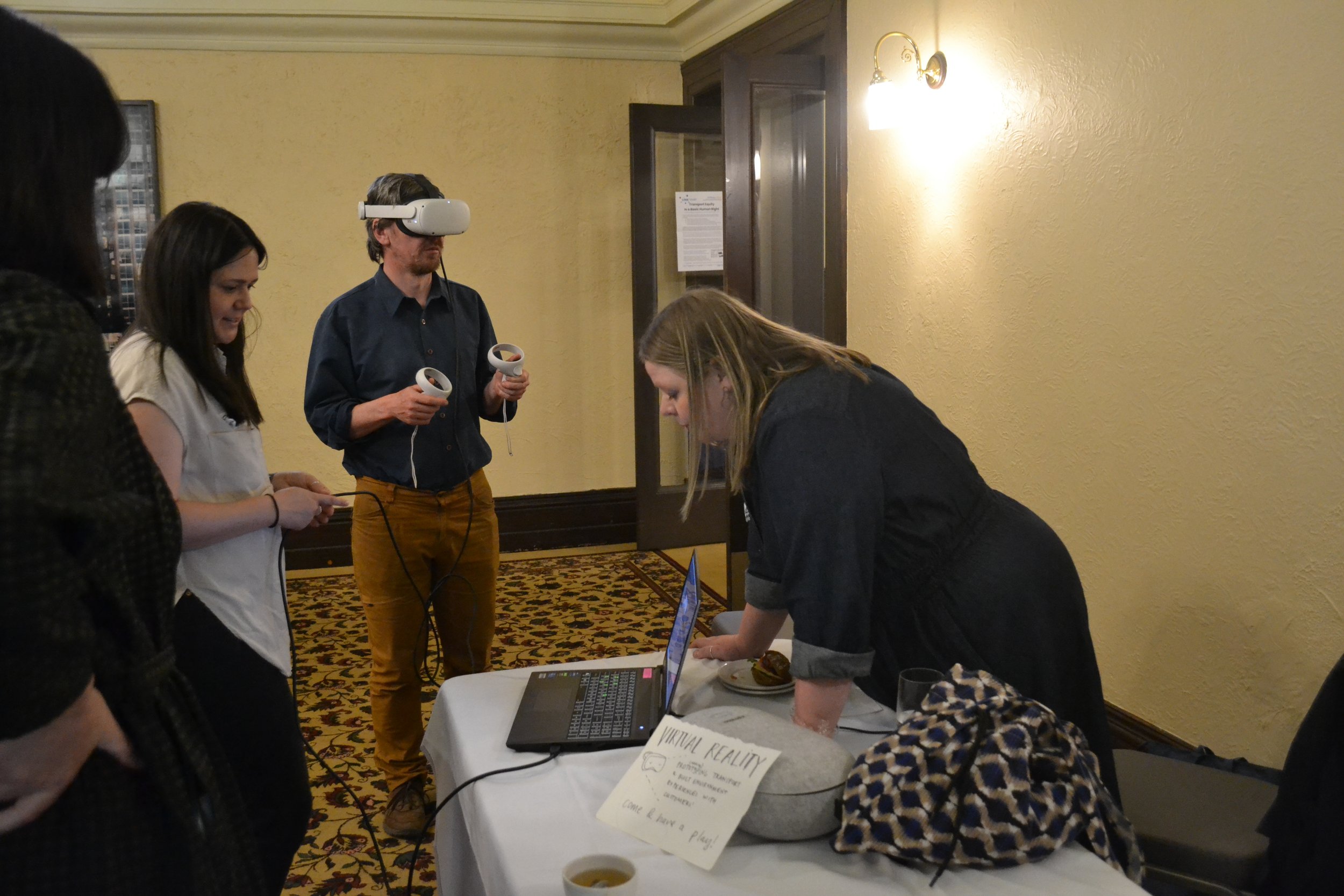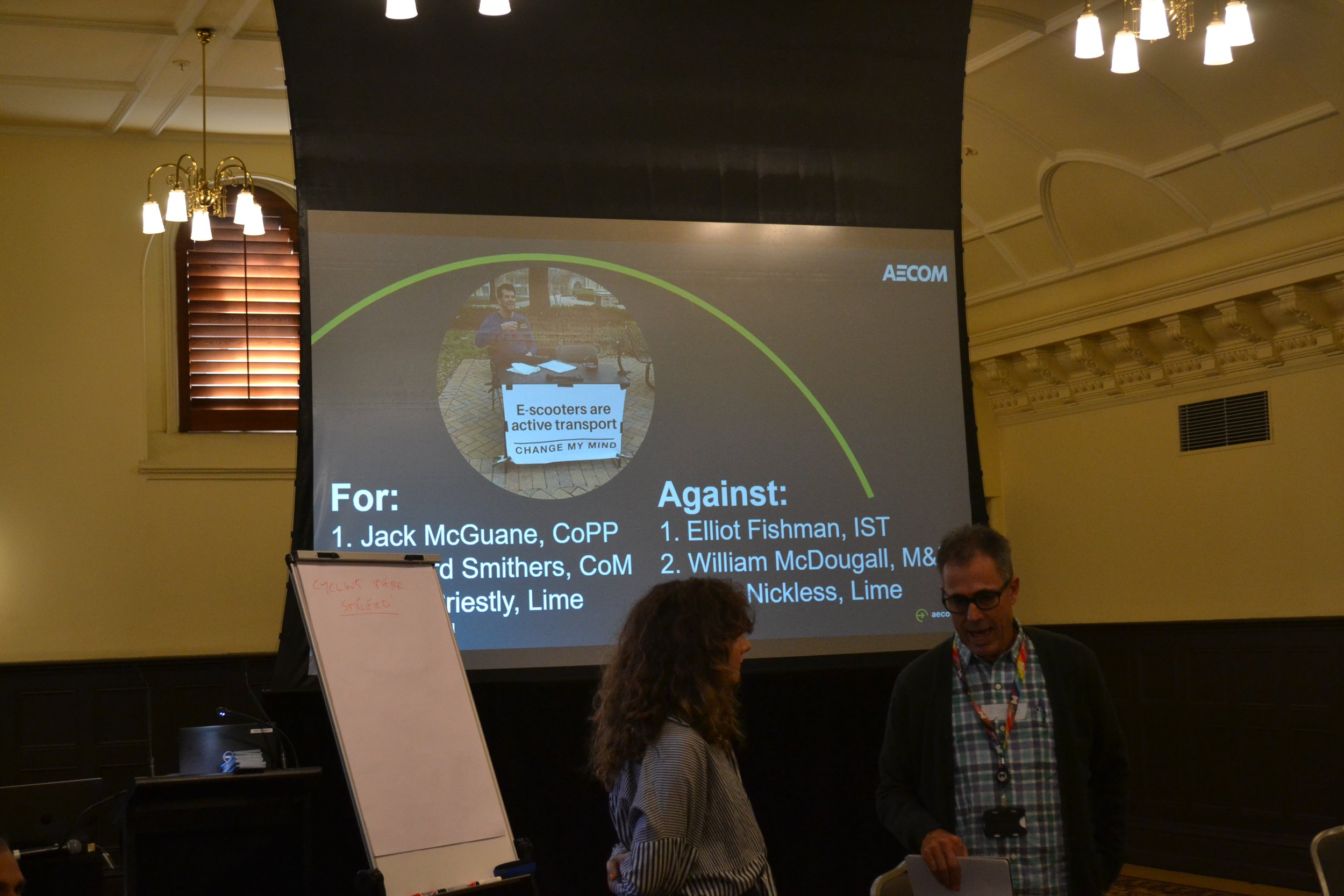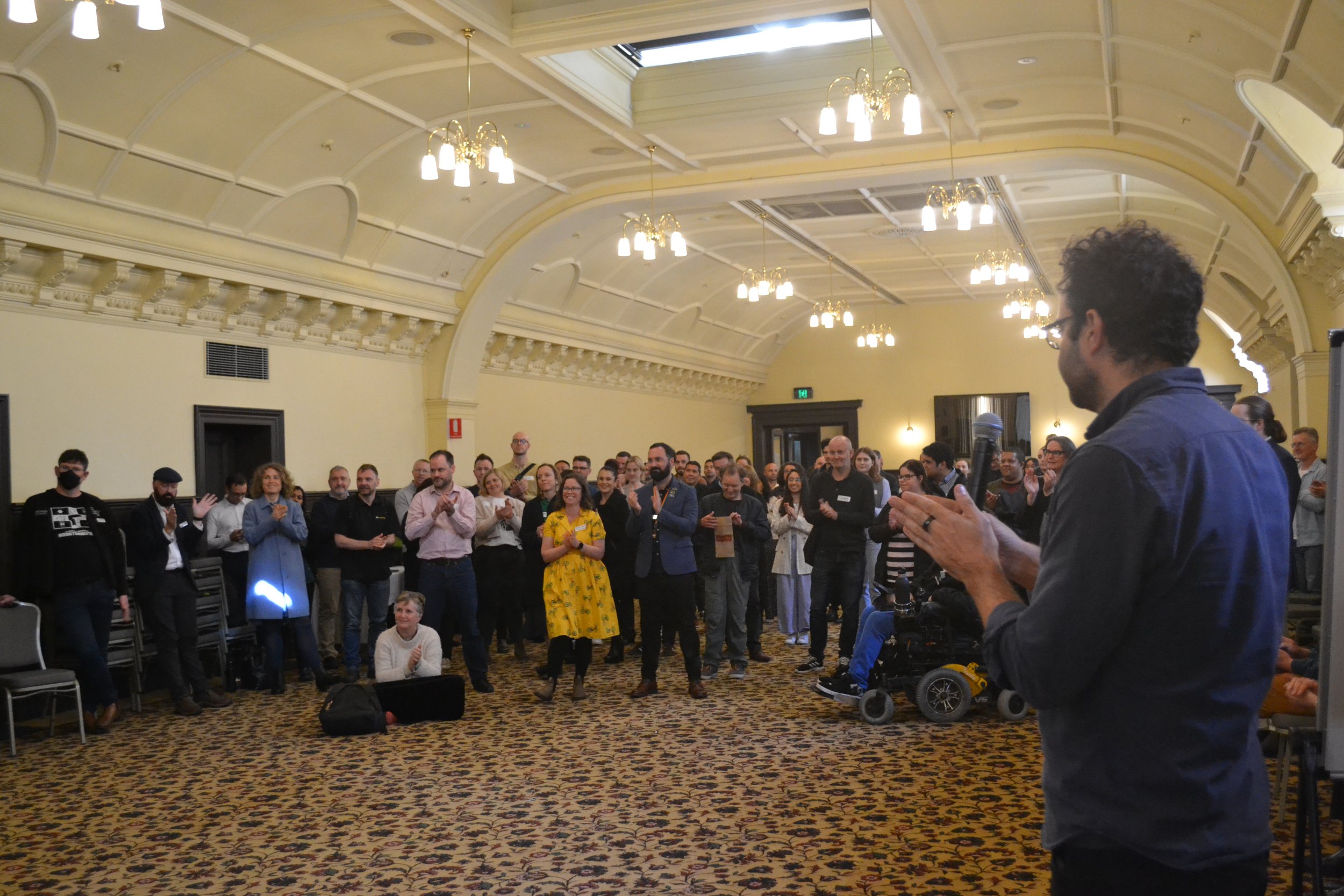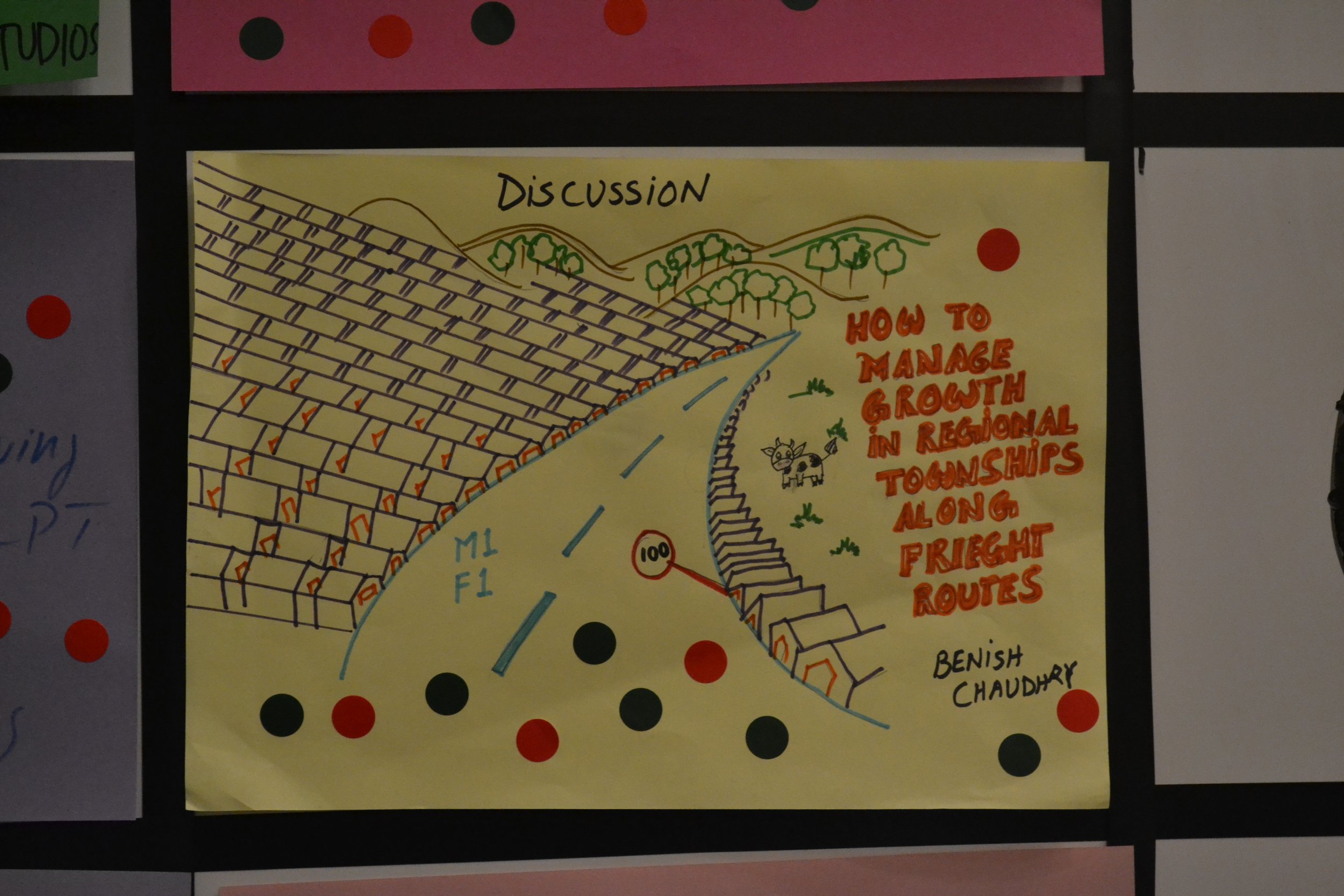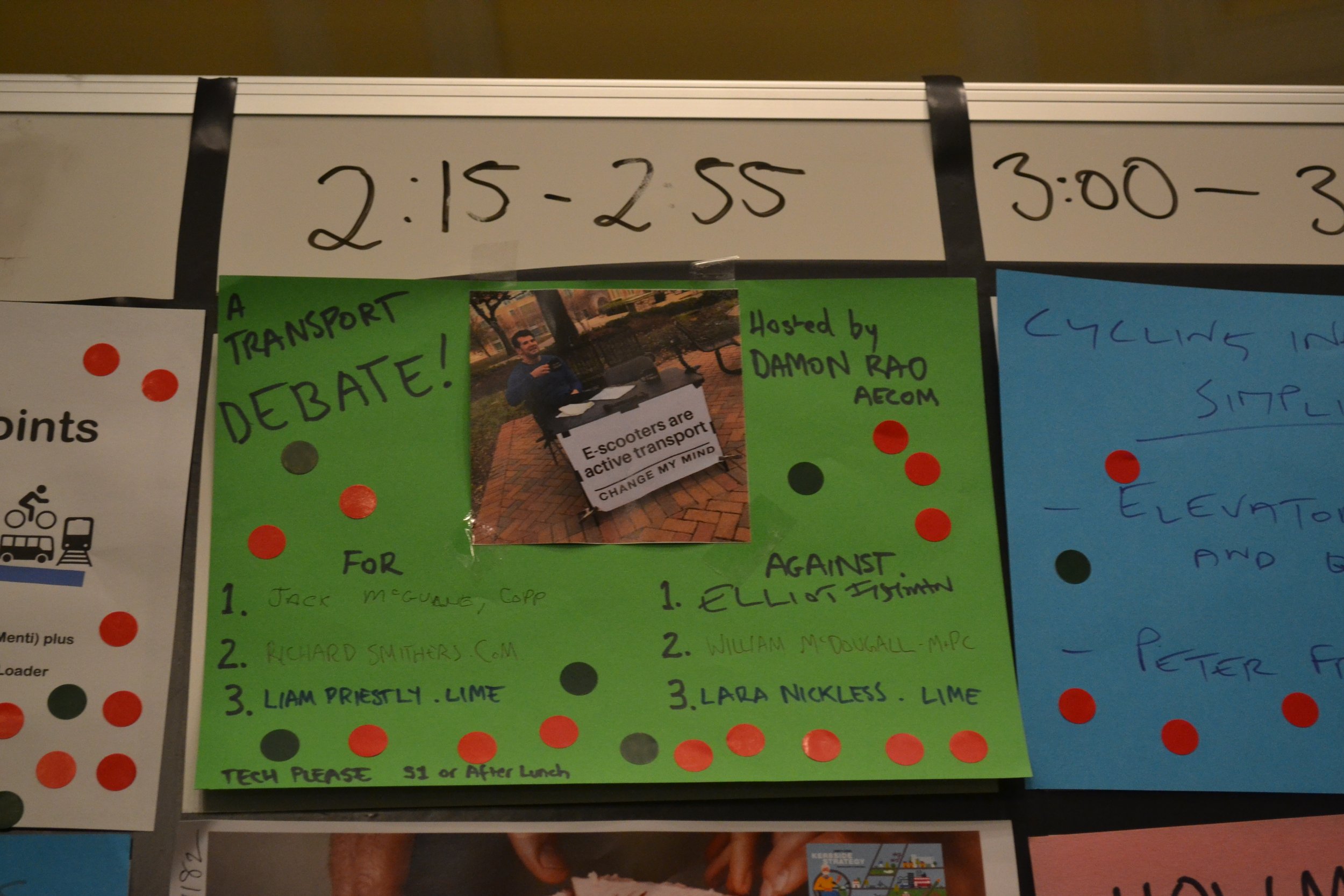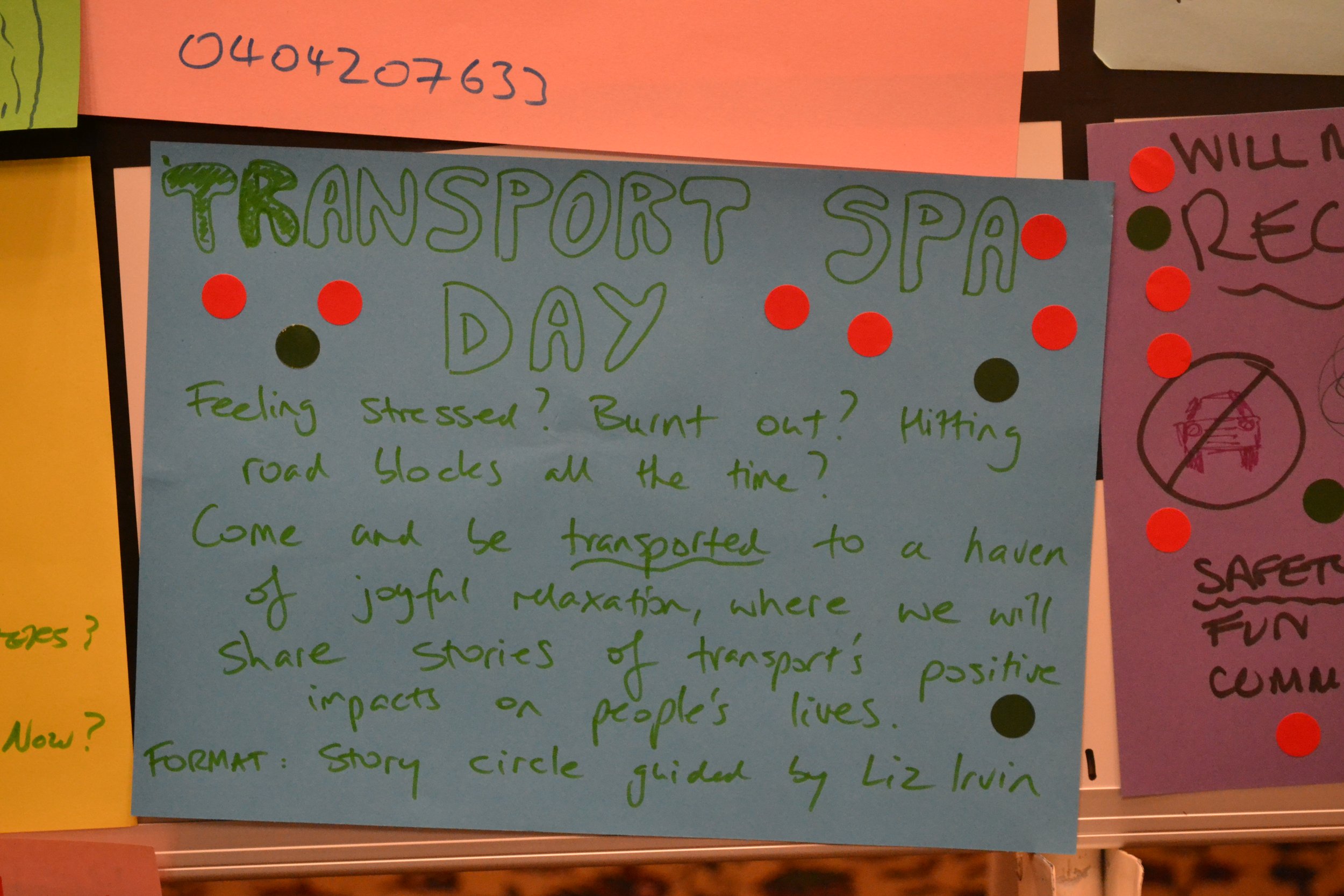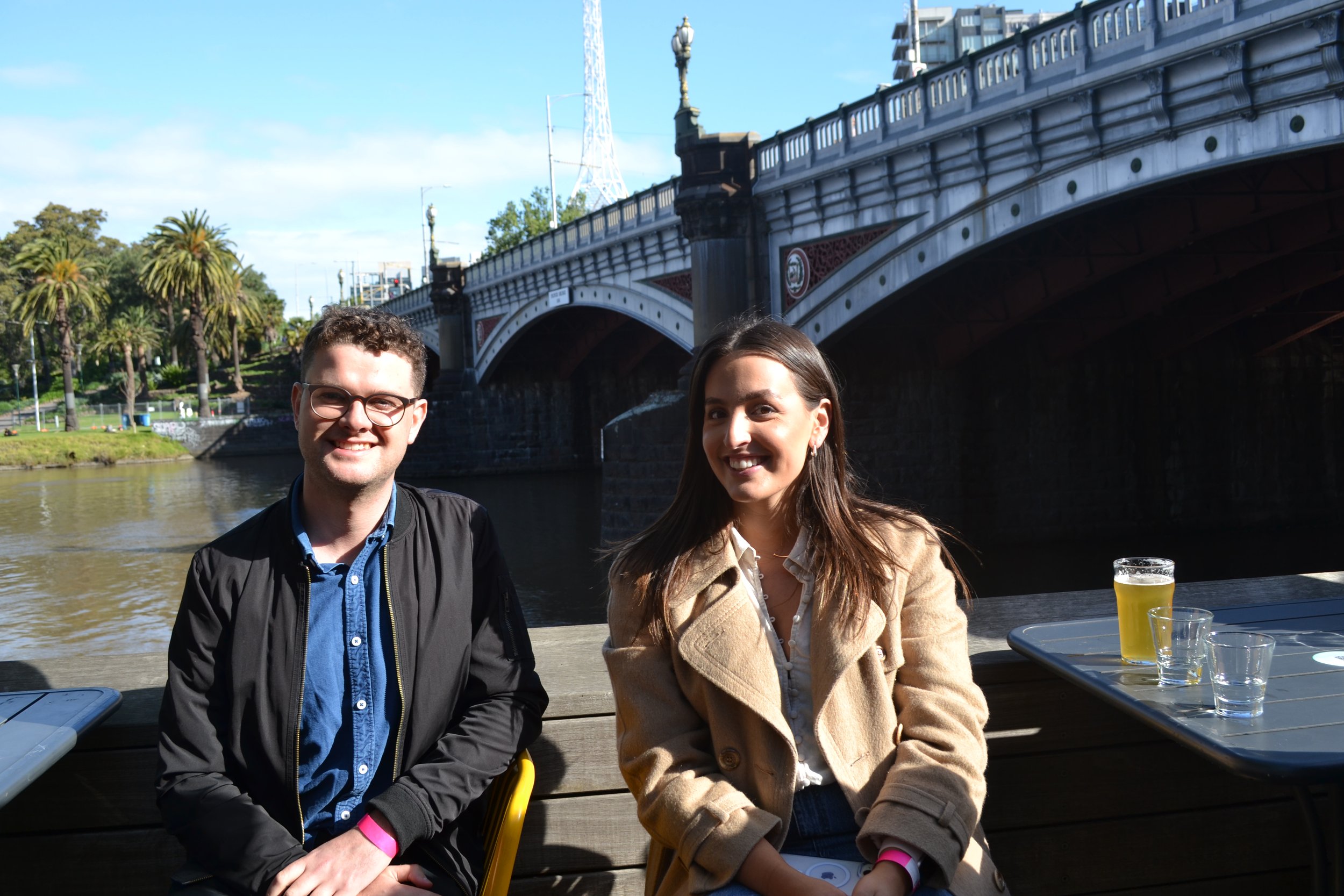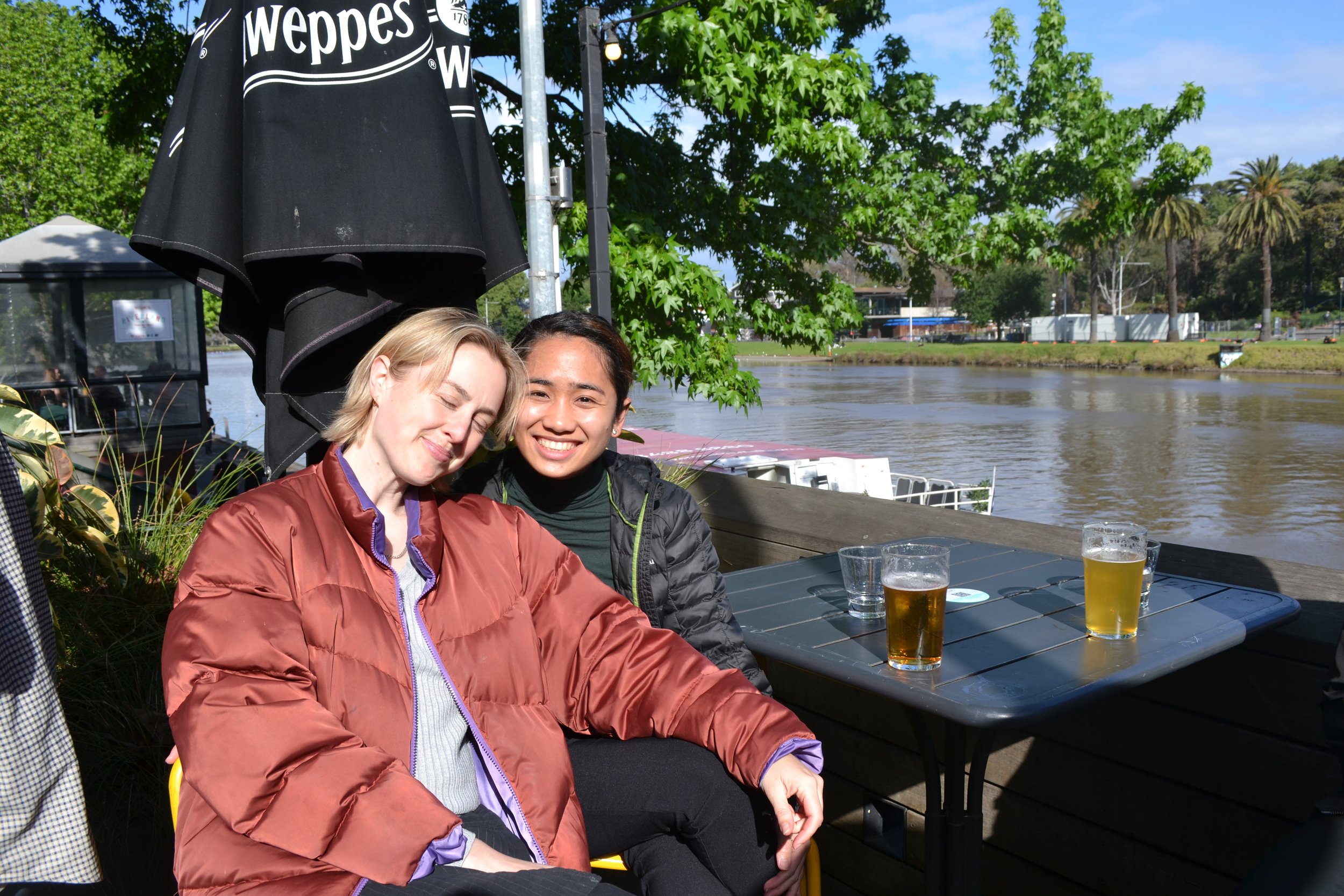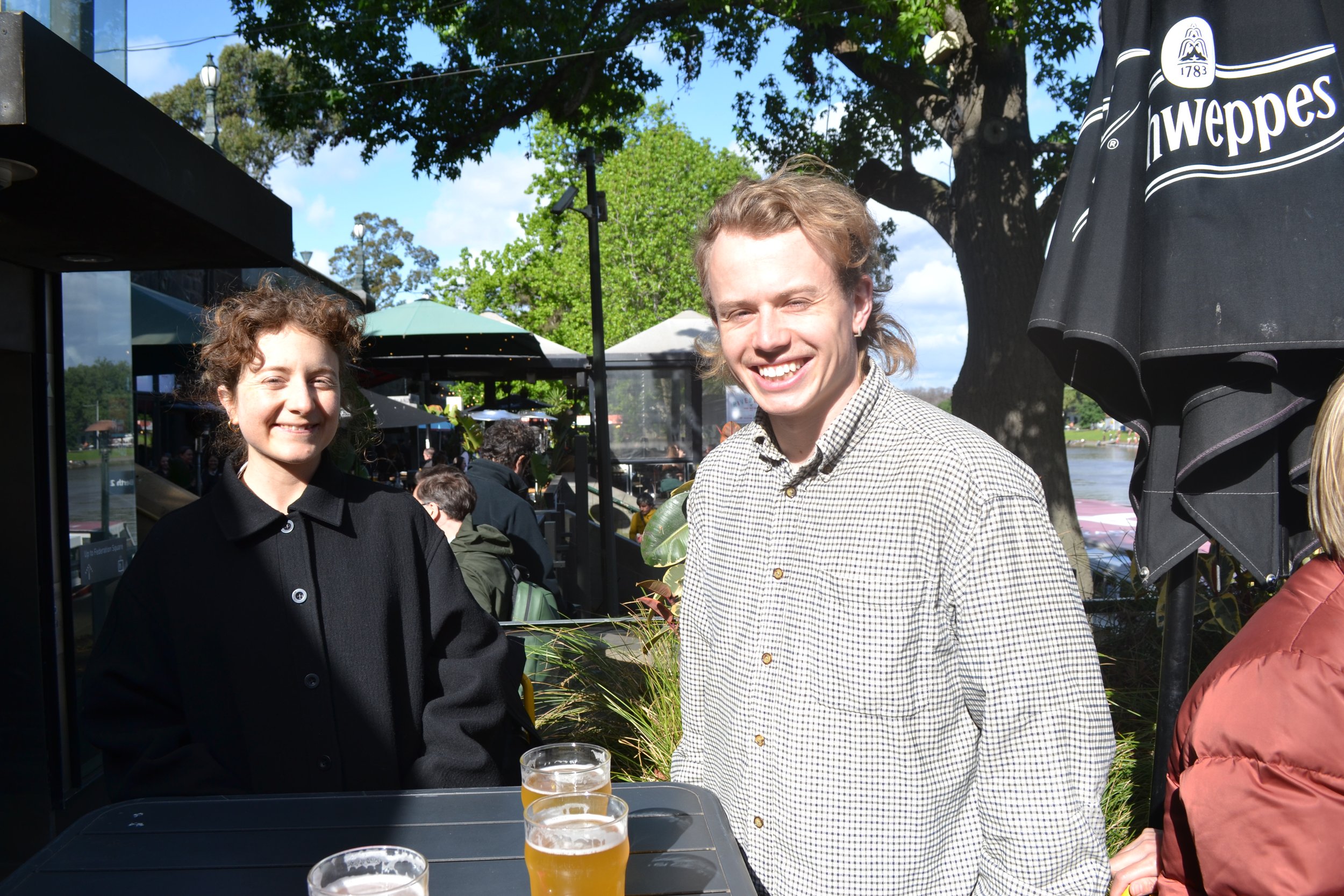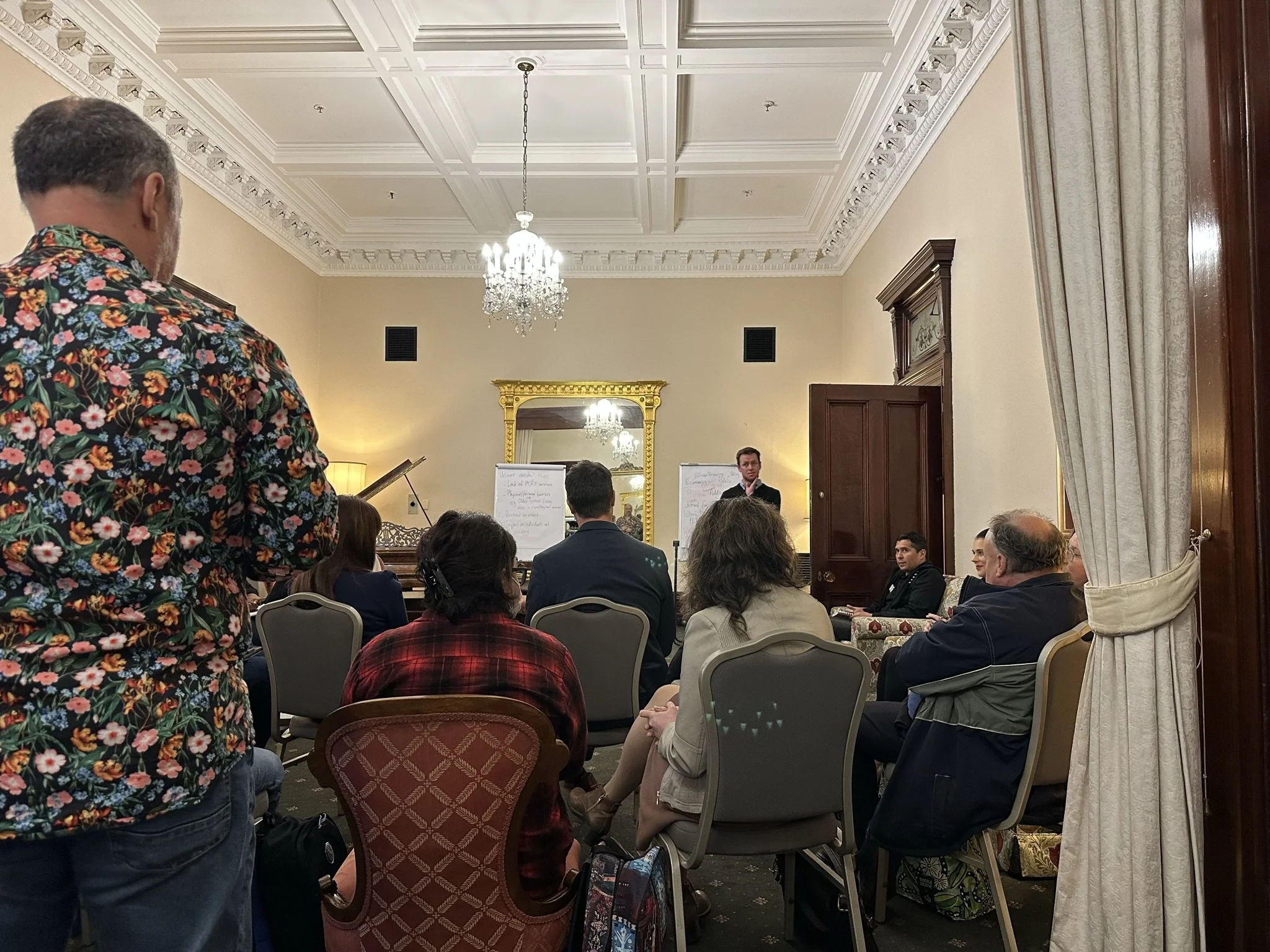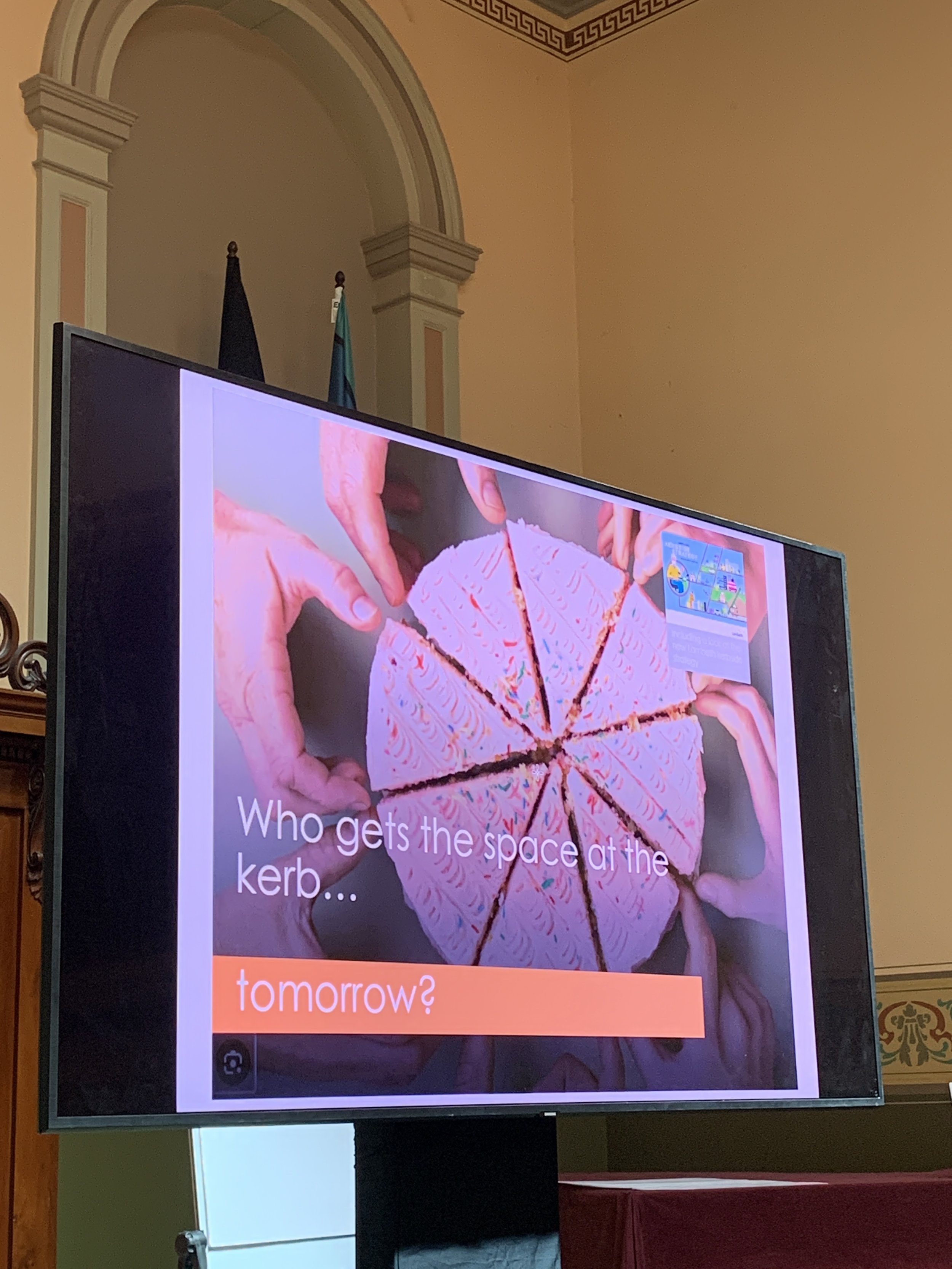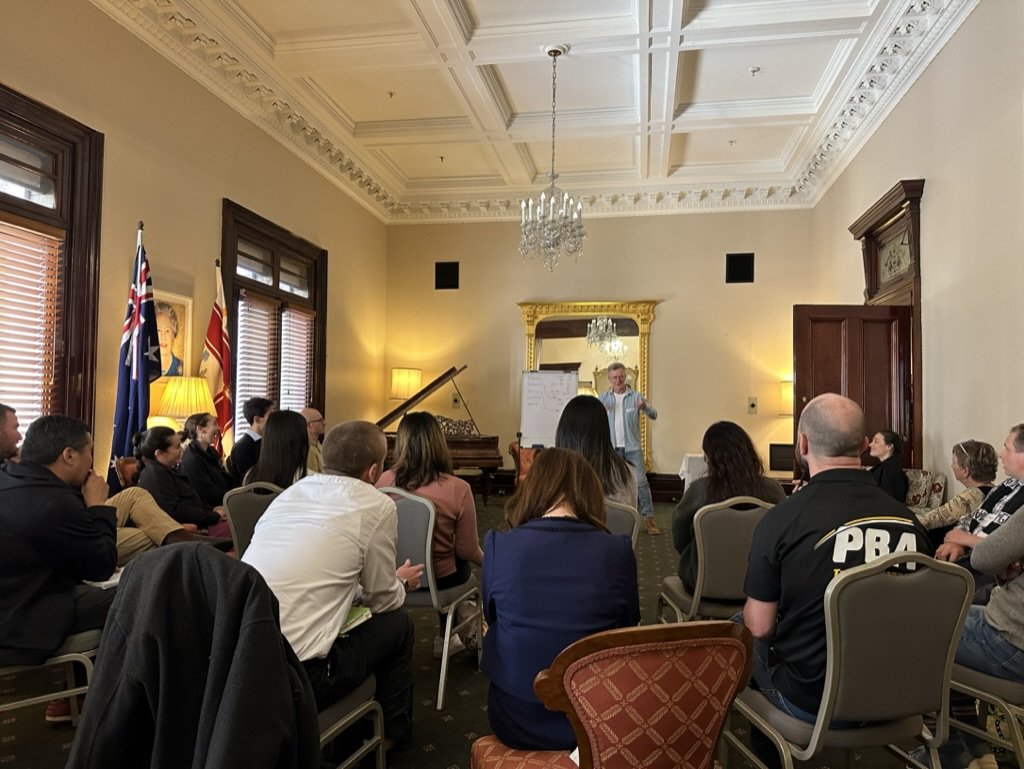2023 Melbourne Sessions
Session 1
Transport Equity
Danny Davis
Session: 1
Room: Portico Room
Format: Presentation
Summary: This discussion on transport equity reached various themes regarding collaboration, education, and accessibility. Encouraging active engagement is vital and so is simplifying explanations to enhance understanding for diverse audiences. Transport equity impacts individuals by various factors like age, location, or physical abilities. Achieving transport equity also hinged on integrating various modes of transportation and fostering a deep understanding of the disparities in access to services, moving beyond merely acknowledging the issue.
Transport Equity is a fundamental human right requiring a coordinated social infrastructure response. It aids in achieving social equity, budget stability, and environmental benefits. This includes equal access to services, health, education, and creating eco-friendly areas to combat emissions. Disadvantages affect groups due to factors like age, disability, health, and underserved regions. Vulnerable individuals without access to mainstream transport face exclusion despite subsidies. It's vital for older individuals' well-being and care-at-home strategies. Local transport solutions bridge gaps and transition to electric public transport. Urgent government action is needed for social equity, cohesion, and environmental sustainability.
School Zones
Kathy Lanazas (PBA Transit)
Session: 1
Room: Melbourne Room
Format: Presentation
Summary: What happens when you are cut off from schools due to zoning, despite being closer to other schools? This process affects children’s independence and ability to walk to school. People move to different zones in order to access certain schools.
Due to the growth of schools, they change the zones and limit the intake of children.
There is a lack of communication between the education and planning sectors.
Lack of infrastructure to walk to school safely, lack of intersections to cross roads safely. From a planning standpoint planning for schools can be hard.
Key Themes:
Focus on primary schools first, but not at the expense of secondary schools. •
Department of Education •
20-minute neighbourhoods
Technology can adapt.
How does housing policy fit into the conversation?
Williamstown has started to implement wombat crossing (raised zebra crossings).
Focus on speed limits. How do we change to mindset of car dependency?
Improving Bus 800
Peter Parker
Session: 1
Room: Yarra Room
Format: Presentation
Summary: Focusing on the PT campaign to improve Bus Route 800, the session addressed the transit inequalities in improving the bus route and subsequent political negligence in keeping up the services. An advocate for local bus route reforms, the speaker highlighted the various ways to address the issue of frequency and service times via channels like media and multilingual letterboxing and the significance of conversations at bus stops. The initiation of the #FixBusRoute800 campaign to upgrade the Bus Route 800 with more service hours served as an example, bringing together such opportunities and aiming to address transit inequalities, especially among lower-income communities with less available transit alternatives.
Session 2
Why you should be prototyping with customers
Zoe Green (Meld Studios)
Session: 2
Room: Portico
Format: Discussion
Summary: Zoe Green of Meld Studios discusses the importance of prototyping with customers in the design process. It allows humans to be centred when addressing the needs and requirements of transport-related designs. Ranging from low-fidelity to high-fidelity prototypes provide a way to test an idea, learn, gather evidence, and iterate what challenges are to be addressed at varying stages of the project. Tools like VR are used to acquire valuable insights and the feedback received from customers fosters confidence in what is being delivered to the world. In turn, ensuring it aligns with real user needs- it is important to acknowledge that everyone has a different experience and that it is fine to not know everything when pursuing a project. Finding a balance in perspective and decision-making is vital when working towards a successful design.
Hammer, Spanner and Drill: Road pricing in New York, London, Singapore
Harry (PBA)
Session: 2
Room: Yarra Room
Format: Presentation
Summary: Harry introduces the idea of paying to avoid congestion as opposed to paying to cause congestion.
Harry highlighted the various ways in which road pricing and parking charges can address the challenges of automobiles in the urban environment. The Drill, Hammer, and Spanner terminology coined by Harry provided a framework for distinguishing road pricing in cities such as New York, London, and Singapore. While the general conversation addressed the challenges of equity, capacity, and existing measures and targets, Harry's theory for Drill, Spanner, and Hammer was as follows: Drill Fees: the fees that generate revenue but do not influence significant behavioral shifts. These are not related to the road capacity or traffic and include tolls on Melbourne freeways or in NYC congestion charging. Hammer Fees: the fees that disincentivize consumption behaviors. To influence user decisions, these fees are generally high and increasing while generating some revenue. Examples of these can be found in London traffic charging schemes. Spanner Fees: these are a dynamic model of taxation that seeks to address particular complexities through several tax bands. With the example of Singapore Harry highlighted how this charging scheme can be effective in shifting user behaviour while optimising service capabilities of existing infrastructures. In Singapore's case, it is affordable and, therefore does not create an equity problem.
Community Transport or public transport?
Adam Greig
Session: 2
Room: Melbourne Room
Format: Discussion
Summary: Public transport opportunities in communities, how stable can it be? How can people get to use public transport without it being a barrier?
Expensive transport in Regional Victoria, lack of flexibility
We need to think about the communities and systems that are responsive to individuals and integration to provide equity.
Transport must be responsive in a micro and macro vision in order to attend to issues such as individual needs, cost, usage dynamics, and capabilities of the system.
The funding model in Victoria (volunteer component) is set up in a poor manner, community transport is seen as fragmented and as a poor system, whereas a more competitive and improved program should be developed.
Accessibility:
We don’t only need more money assigned to transport but also to use it in a better way.
Provision of transport in local scenarios is done by local people, but they need effective solutions for its specific needs and contexts (i.e. low demand, aged population).
Hence addressing unmet needs of public transport such as lack of PT/CT services, and physical and personal barriers may be a new question to solve.
Women in rural areas and their mobility is severely constrained.
People in the cities are not aware of the lack of transport in rural areas.
Micro and macro responses - looking at scale and who needs help in order to access public transport. Is the State willing to fund these needs? The system does not take care of accessibility properly. Lack of public transport can lead to being cut off from employment opportunities, especially for people without driver’s licenses.
Community transport helps give back to their own community. There is a growing demand for public and community transport with a growing population. There is a fixed narrative of who we are planning transport for.
Community transport should be available for everyone. There is an opportunity for informal driving/shared car driving in the 'bush' to help elderly, and widowed people. These communities are more likely to help one another. It's hard to make a system 'one-size' fits all. There are examples of this in city retirement homes - many elder people are left isolated and stuck without having their needs met in everyday life.
Session 3
BikeSpot2023
Anthony Aisenberg (CrowdSpot)
Session: 3
Room: Yarra Room
Format: Presentation and Q and A
Summary: Launching Bikespot 2023 in October, Anthony introduced this crowdsourcing program that aims to identify the biking infrastructure in Australian cities. Drawing on the experiences and reports of Bikespot 2020, the discussion largely revolved around the factors to consider in crowdsourced projects such as these, its utility for various councils, and understanding the overall perceived safety of shared and dedicated bike paths in cities. The discussion also highlighted the features of Bikespot 2023 and offered insight into various ways projects such as these can be extended to other transport modes and encourage more conversations related to multimodal transit networks in cities.
Feedback from Nathan (Bike Network) asking, why have we excluded the temporal measure from the BikeSpot parameters. Can the time of day be captured in the survey?
Feedback from Sophie: why has lighting been excluded? Often a theme that is discussed in relation to cyclist safety. However last year’s findings found this was not a main concern for cyclists.
Cycling purpose typology has been applied. A singular focus on cyclists has been applied to have a deeper understanding of the cohort’s experience. As this is a national platform, a focus on purely cycling has been established since the e-scooter laws vary sign between Australian States and Territories.
Google is interested in how BikeSpot can inform cycling routes. A dataset informed by the perception of safety rather than infrastructure creates an opportunity for enhanced wayfinding and route development. Local councils will want to report what they implemented after the BikeSpot 2020. We need to collect these stories.
BikeSpot2020 informed the development of the Haymarket roundabout. There are future plans to arrange outreach to practitioners.
Looking Forward: How can we create a live dataset rather than static? Issues arise as the city is changing dramatically.
How do we get buses into greenfield areas from the start?
Kathy Lazanas (ABP Transit Planning)
Session: 3
Room: Melbourne Room
Format: Presentation and Q and A
Summary: For the Geelong Precinct Structure Plan, 110,000 people are expected to live in a 30-year frame and 90% to have worked within the area. The aim of the speaker is to provide a high-frequency transport service, nevertheless, the average time to develop a network is 15 years. Some ideas to ensure public transport is provided from the first instances discussed were that GAIC should be applied in more areas, developers must ensure facilities without promising PT routes or stops, focusing on primary schools for the first routes and taking into consideration the community value. We are designing on greenfield instead of brownfield, we’re designing for precincts and suburbs that will be completed by 2050. It should be considered not only infrastructure but also the community value. How can we take politics out of transport or really get to coordinate them?
Electric Buses
Ali Kabirian (Yarra Trams)
Session: 3
Room: Portico Room
Format: Discussion
Summary: Electric buses present intriguing possibilities for addressing behavioural shifts, and congestion and improving transport efficiency in urban settings. After reflecting on the resurgence of trams in London, the discussion provided in this session encouraged somewhat of a debate on the relevance, benefits, and complications of electric buses, trackless trams, or even the idea of combining both options. Touching upon challenges surrounding public preferences for trams, the conversations acknowledged the significance trams hold in Melbourne’s identity as a city.
Discuss the topic of zero-emission buses and energy sources, as well as the potential for extending transit services to suburbs and improving the current public transportation network. The user suggests the idea of mixing different modes of transportation, similar to how it is done in North America, and emphasizes the importance of creating a unified and efficient public transport system rather than having competing nodes. Discuss the difficulties of finding information about buses and schedules, as well as the lack of visibility and presence of buses compared to trains and trams. They suggest creating a dedicated lane for buses and increasing their prominence to make them more accessible and convenient. Discuss the challenges of promoting buses as a viable transportation option in Melbourne due to historical perceptions that buses are inferior to trains and trams. They mention the fragmentation of bus operators in Victoria and the difficulty of changing public attitudes towards buses despite new technology. People assume that there is a need for proper analysis and study of the transportation system to determine the best way forward. People also talk about creating a permanent platform that provides a seamless experience for commuters.
Session 4
Forgotten Freeways
Phillip Mallis (City of Port Phillip)
Session: 4
Room: Regent Room
Summary: A general transport development plan began in 1929, and implementation was halted by the great depression. Middle-class car travel was becoming more common in subsequent periods. Purposes shifted from driving for leisure to driving for transport. There was foregrounding of existing problems such as motorists being too demanding, and the wasteful use of the kerbside for car parking. The transport plan of 1969 was implemented exactly as it was designed, and many freeway projects replicated this plan. Marchetti’s constant of 30 minutes is the optimal commute time in history, going back as far as the Neolithic period. The creation of freeways extended the reach of Marchetti’s constant to a wider area, leading to moving the urban growth boundary. This initiated a vicious cycle of disinvestment. In 1971, there began to be infill between fixed rail, demonstrating the impact of freeway construction from the Transport Plan 1969. This action created a legacy of missed investment in public transport, where 70% of people are not within access to rail stations.
Politics, legitimacy, and implementation
James Reynolds
Session: 4
Room: Melbourne Room
Summary: Fundamental issue:
Politics, how can we actually get buses to work? VicRoads is not longer around cars (5 years ago)
Limitations:
Hard to get funding to redevelop intersections (requirements such as at least 3 deaths in the last years)
Things that we need to improve the situation:
Legitimacy & Public consent (study case: Zürich, Curitiba bus)
Pop-ups
The use of 'pop-ups' to show people what could be implemented. A low-risk way of trying to implement change. Implementing first, then legitimising it.
Yarra Trams pop-up stations for tram stops while being aware that they would go down with the new metro. There are negotiables and non-negotiables that must be clear from the start. Frameworks can be developed. There should be better integration of land and transport in terms of policies to be able to provide a legitimate and good implementation.
How do San Francisco and Seattle run their world-leading kerbside parking?
Harry Barber (PBA Transit Planning)
Session: 4
Room: Portico Room
Summary: These two cities share the same aim and principles, but have a different approach when it comes to kerbside parking.
How do they differ?
Space
They started with one flat fee across one big area and broke up the area into large zones
300 bays 10 blocks x 10 blocks 400m x 600m 4 or 5 in the Melbourne CBD
Applied a different tariff to each area
Still the same footprint after 10 years
Some bigger zones have been split
Easier to manage, harder to match to variation in activity
Time
Seattle starts earlier, longer bands, finishes earlier (although allows exceptions, some areas finish later), Never on a Sunday. Has a seasonal tariff in some parklands.
San Francisco: later start, later finish, shorter bands. Recently went to 10 pm finish and meters on all days.
Which is better?
We know both systems are effective at preventing overload.
Session 5
artificial intelligence and machine learning
Rick Williams
Session: 5
Room: Portico Room
Summary: What can we borrow from other disciplines and research?
The speaker discussed their perceptions of AI and its limitations, addressing topics such as automated plagiarism, unreliable guessing, and ethical concerns related to intellectual property. The user also emphasised the significance of comprehending the rationale behind AI-generated responses, advocating for deeper insights rather than relying on single answers. Furthermore, the speaker delved into various AI-related subjects, encompassing clear-cut methodologies, sensitivity tests, neural networks, linear models, trip generation, and data processing. They elaborated on several technical concepts and their practical applications across diverse fields. For instance, the user explored the process of converting text into valuable data, particularly within the context of travel surveys. In addition, the speaker discusses the importance of reliability in public transport. They briefly discussed the intricacies of transfer simulations, leveraging historical data, and monitoring urban events. They also delved into the utilization of AI and predictive models in analyzing transportation data, addressing data quality issues and potential areas for enhancement. However, the speaker also mentions the challenges of collecting and analyzing data in the field.
Transport Spa Day
Liz Irvin (Stantec)
Session: 5
Room: Melbourne Room
Summary: A small session was held with the aim to share the good experiences Public Transport has given us. From people getting rid of the cars and enjoying walking, biking, and having a different way of freedom.
Choosing to pay a mortgage over buying a house, forgetting about parking, chasing the tram, becoming more sustainable, becoming part of new groups (i.e., biking) and even watching the journey from a different point of view.
Although some limitations and opportunities for improvement are acknowledged, most of the stories seem to end the same way: no regrets about getting rid of the car. After some years, many improvements have been made and seen by the storytellers, which in a sense makes all the work more fulfilling.
Who gets Space at the Kerb?
Harry Basser
Session: 5
Room: Melbourne Room
Summary: How can we get buses at close to the train station as possible? Who gets priority on our road interfaces? This session explored Lambeth as a case study. There is limited space within our built environments, Lambeth have discussed how the metres that form a street, introduces a “portfolio”. Within this portfolio, what types of uses can we allocate within these intervals along the kerb. In Lambeth, a tree is planted every 25m. Bike parking is provided every 50m. If you have 85m, that means 1 bike parking station is required, using 5% of the allocation. The Lambeth portfolio: 15% Trees 5% Bike Parking The remaining 80% is for other uses. What about City of Melbourne? An approach was proposed where the 5 metre slots were counted with their associated uses. In Melbourne 24% is allocated for vehicles in motion, the largest category was dedicated to parking. How can we most efficiently manage our keen space. With a limited number of ‘bays’ what other formations can we employ to introduce more greening, car sharing, and uses not related to parking.
Session 6
How might we think about transport and climate adaptation?
Rachel Bucknall
Session: 6
Room: Yarra Room
Format: Presentation
Summary:
Climate Change Symptoms
Highlighting consequences in Greater Melbourne: temperature rise, bush fires, flooding, air pollution, heatwaves, reduced rainfall, and rising sea levels.
Example from France: rising temperatures causing mosquito-borne sickness with pandemic potential.
Impact and Opportunities
Investment in high-quality, reliable infrastructure.
Emphasis on the relationship between movement and place (Street tree polices- trees' vital shade role in extreme weather protection)
More resilient and People-centered planning, as well as the need to rethink and retrofit existing infrastructure.
Goal and Principles
Clarity on goals and priorities for effective governance.
Advocacy for good governance, risk mitigation, and preventative infrastructure reinforcement.
Keep creating & innovation part of the consideration, for example, the innovative mushroom industry.
Climate Justice
''On The Frontline, From the Sidelines"-Daphne Frias- Climate justice activist
Discussed the vulnerability of disabled communities and prioritized disadvantaged communities in climate-related solutions.
Large trust in transport & government.
Impact on access to services, health, recreation, well-being, and education.
Self efficiency-strong resilience& adaption skill
Local adaption & resilience.
Reclaim the Streets
Will McDougall
Session: 6
Room: Melbourne Room
Format: Presentation
Summary:
Speed, Safety, SUVs, Silence, Space.
Creating safer environments for all.
Car-dependent neighbourhoods can lack a sense of community.
We have to move at a lower speed in order to make roads safer.
There has been a strong marketing effort to sell these big SUVs to us as consumers.
Safety is very important when choosing the mode of transportation.
There is a massive gap in the market in order to show people that they can choose other modes of transportation other than cars.
There is no government promotion of public transport.
What if your vehicle had a health star rating?
In the UK the price of registration varies depending on how much CO2 it produces.
Reclaim the Streets
Will McDougall
Session: 6
Room: Melbourne Room
Format: Presentation
Summary: In a city where we don’t get out from home and talk to our neighbours to a place where we have our cities back. Some of the concepts discussed within the session were speed, safety, SUVs, silence, and space, providing a framework of which things need to be further analysed and perhaps improved. Government plays an important role in providing options and backing up public and active transport legitimacy and promotion and considering property prices and the housing market. Additionally, safety has been a subjective topic, as women vs. male perspectives are different and this can lead to different decisions upon which ways of transport to use. The impact of a day without using public transport or car were displayed as imaginaries that could give revolutionary and unexpected outcomes and reactions. So, what can you do over the weekend to reclaim your street? Hosting a street party? Watching TV out of your house? Planting flowers? Playing in the streets with your children?



